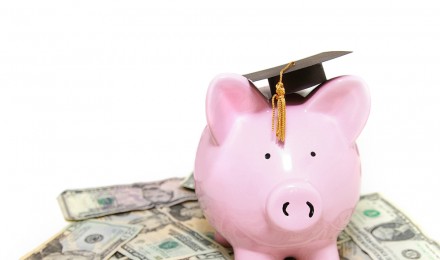Millions of college-bound students and their parents rely on student loans to pay tuition and other college expenses, such as books, rooming and supplies. And although student loans can result in costly debt after graduation, many students applying for subsidized Stafford loans have been able to breathe easier knowing that they’re receiving a low, fixed-rate loan from the government.
Regrettably, the interest rate on new subsidized Stafford loans are set to double on July 1, 2013. The rate will increase from 3.4% to 6.8%, and it’s estimated that this increase will impact approximately 7 million college students in the next school year. A higher rate increases how much these students owe after graduation. And with many college students currently struggling to keep up with their student loan payments, many feel that increasing the rate on subsidized Stafford loans could make matters worse. Despite the risk, the rate will automatically increase if Congress doesn’t act by July 1.
Congress and the White House agree that action needs to be taken to stop the interest rate hike, but neither knows the best way to proceed. In respond to the fast approaching deadline, the House of Representatives recently approved a Republican-backed student loan bill that ties future student loan interest rates to the market. Rates would be tied to the interest rate on a 10-year Treasury note, plus 2.5 percentage points. As part of the proposal, interest rates would cap at 8.5%. The proposal would essentially do away with fixed rate Stafford loans, thus introducing variable rate student loans.
Because interest rates are low across the board, Republicans argue that a variable rate on new subsidized Stafford loans addresses the immediate problem and keeps rates at their current low, although rates would increase in the future. According to the Congressional Budget Office, this proposal “would save the government $1 billion dollars over five years.”
This plan is similar to the one proposed by President Obama in April, in which interest rates would be tied to the yield on a 10-year Treasury bill. Under this plan, student loan rates would fluctuate from year to year. But once a student acquires a loan, his rate would remain the same for the duration of the loan, thus offering predictable payments. The Republican’s approach is a bit riskier, as a variable rate throughout the life of a loan triggers constant payment fluctuations. Regarding the bill, the White House issued a veto threat.
Although a Republican bill, opposition and support have been expressed by both political parties. Some feel that the bill is a step in the right direction, but others believe that variable interest rates will create a lot of financial uncertainly for college graduates. Additionally, a lot of criticism comes from the fact that if passed, this legislative will affect other types of federal student loans, such as unsubsidized Stafford loans, graduate loans and parent loans.
With July 1st right around the corner, many college-bound students and their parents can only hope for the best, while bracing for the worse.
Millions of college-bound students and their parents rely on student loans to pay tuition and other college expenses, such as books, rooming and supplies. And although student loans can result in costly debt after graduation, many students applying for subsidized Stafford loans have been able to breathe easier knowing that they’re receiving a low, fixed-rate loan from the government.
Regrettably, the interest rate on new subsidized Stafford loans are set to double on July 1, 2013. The rate will increase from 3.4% to 6.8%, and it’s estimated that this increase will impact approximately 7 million college students in the next school year. A higher rate increases how much these students owe after graduation. And with many college students currently struggling to keep up with their student loan payments, many feel that increasing the rate on subsidized Stafford loans could make matters worse. Despite the risk, the rate will automatically increase if Congress doesn’t act by July 1.
Congress and the White House agree that action needs to be taken to stop the interest rate hike, but neither knows the best way to proceed. In respond to the fast approaching deadline, the House of Representatives recently approved a Republican-backed student loan bill that ties future student loan interest rates to the market. Rates would be tied to the interest rate on a 10-year Treasury note, plus 2.5 percentage points. As part of the proposal, interest rates would cap at 8.5%. The proposal would essentially do away with fixed rate Stafford loans, thus introducing variable rate student loans.
Because interest rates are low across the board, Republicans argue that a variable rate on new subsidized Stafford loans addresses the immediate problem and keeps rates at their current low, although rates would increase in the future. According to the Congressional Budget Office, this proposal “would save the government $1 billion dollars over five years.”
This plan is similar to the one proposed by President Obama in April, in which interest rates would be tied to the yield on a 10-year Treasury bill. Under this plan, student loan rates would fluctuate from year to year. But once a student acquires a loan, his rate would remain the same for the duration of the loan, thus offering predictable payments. The Republican’s approach is a bit riskier, as a variable rate throughout the life of a loan triggers constant payment fluctuations. Regarding the bill, the White House issued a veto threat.
Although a Republican bill, opposition and support have been expressed by both political parties. Some feel that the bill is a step in the right direction, but others believe that variable interest rates will create a lot of financial uncertainly for college graduates. Additionally, a lot of criticism comes from the fact that if passed, this legislative will affect other types of federal student loans, such as unsubsidized Stafford loans, graduate loans and parent loans.
With July 1st right around the corner, many college-bound students and their parents can only hope for the best, while bracing for the worse.






